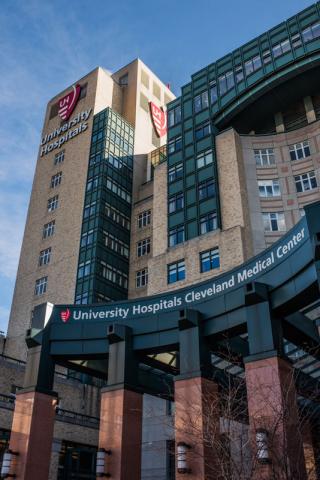Peggy Seidman, MD at University Hospitals and Professor of Anesthesiology at Case Western Reserve University School of Medicine ran a key, hands-on simulation course for first- and second-year medical students from 2015 to 2017. The course is noteworthy not just for the curriculum—which was developed to teach introductory clinical skills—but also because it relied heavily on the assistance of students from the Master of Science in Anesthesia Program.
The Course
According to Dr. Seidman, the course offered medical students a “non-stressful, non-threatening” space to hone their clinical hand skills on task trainers and simulation mannequins prior to having actual patient care. Use of simulation has been shown to increase confidence and skill in nascent trainees and is now considered critical part of skills training
There are approximately 200 first- and second-year medical students at CWRU. For Dr. Seidman’s class, these cohorts were divided into groups of 50 for each section. In class, the students rotated through simulation stations. Each station was devoted to honing a specific hand skill, and stations that were staffed by MSA students included basic airway skills and intramuscular injection skills. In addition to basic airway skills and intramuscular injection skills, the curriculum included many anesthesia-related procedures including intravenous line placement, subcutaneous injections, and arterial line placement.
MSA students functioned as teaching assistants throughout the duration of the course, demonstrating the skill at each station and providing instruction and hands-on direction for medical students to practice. They were able to work up to four sessions. According to the 2017 ASA poster presentation, which resulted from this work, Dr. Seidman and fellow instructors viewed the MSA students as “experts” at these skills and key educators who “offered a novel format for peer teaching.”
MSA Students as Educators
The group skill sessions taught in this course emphasized the importance of the care team, and promoted lateral learning from classmates—a valuable experience for medical students that boasted confidence in hand skills, communication, and teamwork.
MSA students reported increased confidence in their clinical knowledge and skill as well as an improved understanding of their role as educators. Students gained valuable lessons in pacing, and learned when to intercede with additional instructions or when to try a different teaching approach. One student summarized this perfectly, saying, “I feel [that working as a teaching assistant] improved my skills in communication and helped me better understand what I was doing myself.”
The majority of CWRU MSA graduates will go on to work at teaching hospitals and hold clinical instructor appointments with Master of Science in Anesthesia programs. As there are very few pedagogical resources for certified anesthesiologist assistants, this teaching assistantship offered MSA students a unique opportunity to hone their skills as educators.
One student noted, “I most likely will be teaching students in the future. Teaching this simulation allowed for me, in a way, to see from the perspective of an instructor. I see this as an invaluable experience. Therefore, even teaching one session can have an enormous personal impact.”
Another reported, “I’ve always wanted to work with students. I think it’s important to remember we were all there are one point, and this experience reminds us that we are always a student ourselves.”
“There was a great response from the School of Medicine students, and it validated MSA students. They saw themselves as trainers because they were teaching instead of doing,” Dr. Seidman said of the classroom experience. Throughout the process, Dr. Seidman served as faculty advisor to the MSA students and offered individualized orientation and reflection to each student. She also observed that both the MSA students and the medical students received what she called “secondary gains,” which included a better understanding of interdisciplinary teams, and the role of education and communication in healthcare. All students were empowered through the course, and reported increased confidence in their roles as healthcare providers.
Dr. Seidman presented a poster, discussing the course and reflecting the significance of these findings, in October 2017 at the annual ASA conference in Boston, Massachusetts with her then-resident, Tessa Newman, DO and Michael Patrick, CAA ('05). The ASA conference is the largest anesthesia conference in the world, and poster presenters are selected by committee. The poster was titled Preclinical Simulation Training for Preclinical Medical (PMS) Allows Interdisciplinary Teaching for Master of Science in Anesthesia Students (MSAS). A version of the poster can be seen here, and includes photos of CWRU MSA students in which they are demonstrating arterial line placement on partial task trainers.
In April 2018, Justine Westover, CAA ('18) and Michael Patrick (pictured above) presented a version of the research at the annual meeting for the American Academy of Anesthesiologist Assistants in St. Petersburg, Florida.
Though Dr. Seidman no longer teaches this course at the School of Medicine, she continues to advocate for pedagogical opportunities for MSA students at Case Western Reserve University and is collaborating with our faculty to implement those trainings.


